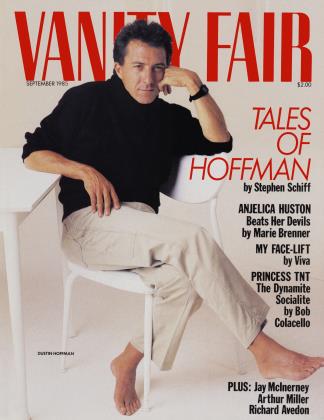Sign In to Your Account
Subscribers have complete access to the archive.
Sign In Not a Subscriber?Join NowPOST-POP MASTER
A traveling retrospective of Wayne Thiebaud's paintings and drawings (1961 through 1984) opens this month at the San Francisco Museum of Modem Art, demonstrating once again that this California painter has always been as different from his Benday-pop brethren as he is from the hordes of breastbeating demi-painters now claiming to have revived the very art that he has been practicing—evenly, methodically, but never dispassionately—for thirty-five years.
When pop hit, Thiebaud was past forty and had already ripened a painting mode that was anything but avant-garde: still lifes and street scenes overlaid with a discreet veneer of abstract expressionism. But rather than allowing his depicted objects to dissolve into abstraction, Thiebaud decided to push for clarity: in his famous cake paintings of the 1960s, subject and paint melded to the apotheosis of meaning and method envisioned by the abstract expressionists. Many regarded these early pictures as typical pop banality swathed in gooey-slick wrapping, but the artist never felt like one of that banana bunch.
Although twenty years of still lifes constitute the main body of his work, the last ten years of San Francisco cityscapes have enhanced Thiebaud's post-cake reputation. His latest series of darker landscapes and still lifes should secure his place as an American master. Wayne Thiebaud, sixtyfour, is old enough and savvy enough to use the word existential without blushing, and it is this adjective that he attributes to his new pictures. With their quiet bravado, these paintings will once again raise questions about his place within or without the putative mainstream. "My reaction to being out of the mainstream,'' he concludes, "is that I'm pot out of the mainstream." Five centuries of great painters would agree with the man.
Peter Plagens
 View Full Issue
View Full Issue












Subscribers have complete access to the archive.
Sign In Not a Subscriber?Join Now